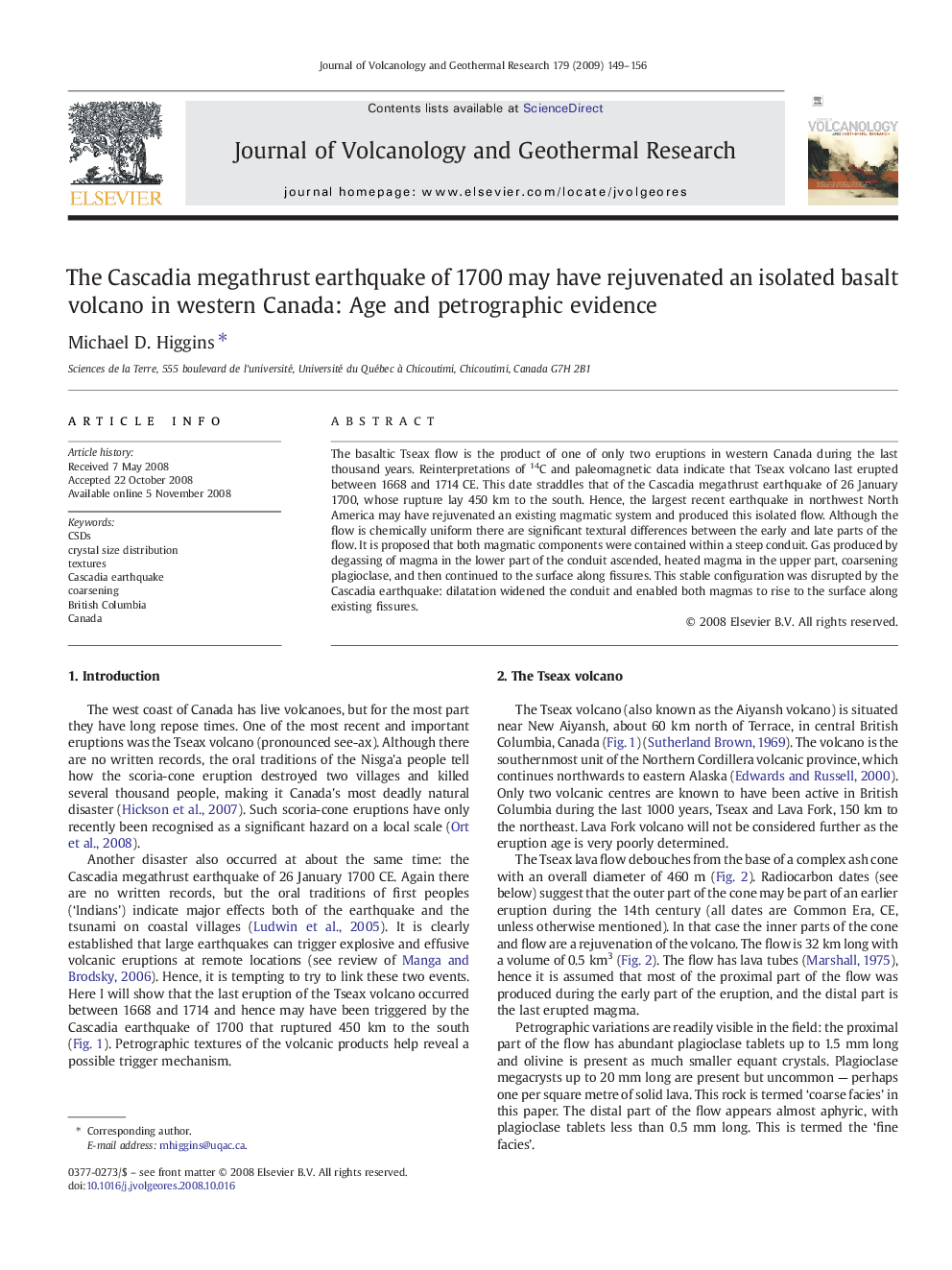| کد مقاله | کد نشریه | سال انتشار | مقاله انگلیسی | نسخه تمام متن |
|---|---|---|---|---|
| 4714510 | 1638444 | 2009 | 8 صفحه PDF | دانلود رایگان |

The basaltic Tseax flow is the product of one of only two eruptions in western Canada during the last thousand years. Reinterpretations of 14C and paleomagnetic data indicate that Tseax volcano last erupted between 1668 and 1714 CE. This date straddles that of the Cascadia megathrust earthquake of 26 January 1700, whose rupture lay 450 km to the south. Hence, the largest recent earthquake in northwest North America may have rejuvenated an existing magmatic system and produced this isolated flow. Although the flow is chemically uniform there are significant textural differences between the early and late parts of the flow. It is proposed that both magmatic components were contained within a steep conduit. Gas produced by degassing of magma in the lower part of the conduit ascended, heated magma in the upper part, coarsening plagioclase, and then continued to the surface along fissures. This stable configuration was disrupted by the Cascadia earthquake: dilatation widened the conduit and enabled both magmas to rise to the surface along existing fissures.
Journal: Journal of Volcanology and Geothermal Research - Volume 179, Issues 1–2, 15 January 2009, Pages 149–156